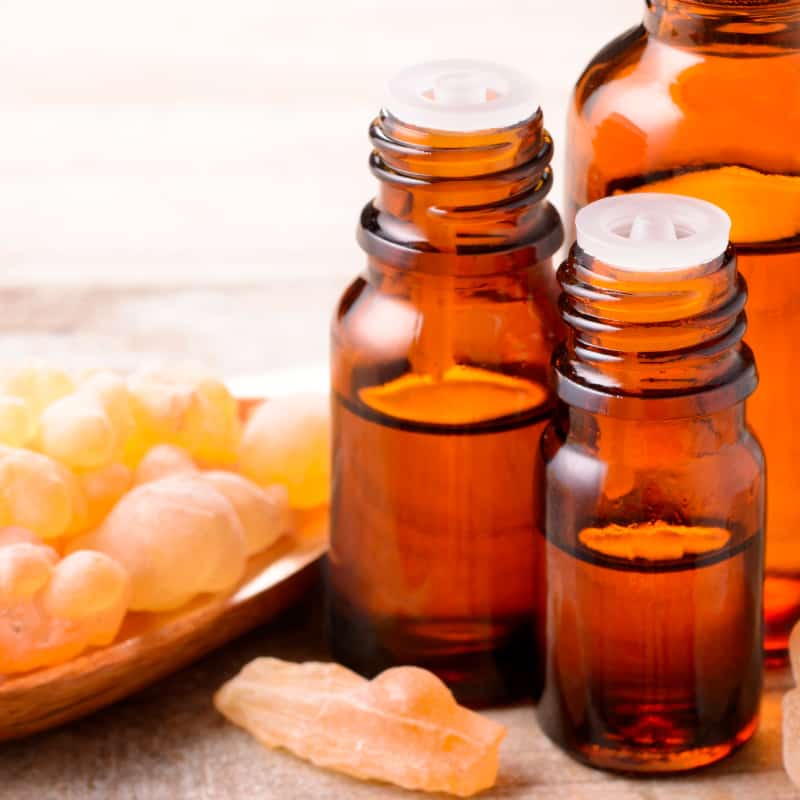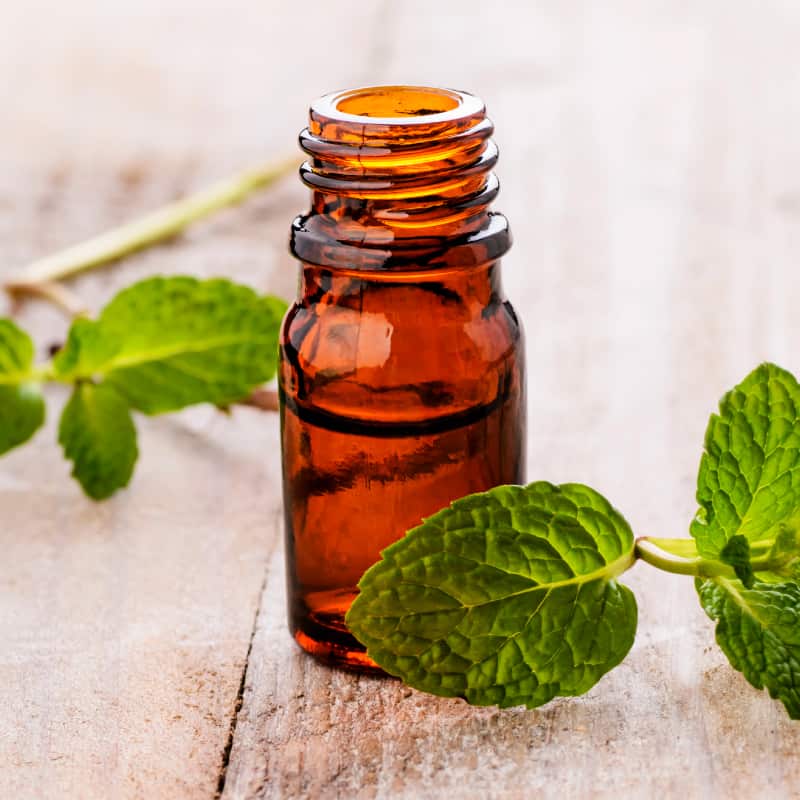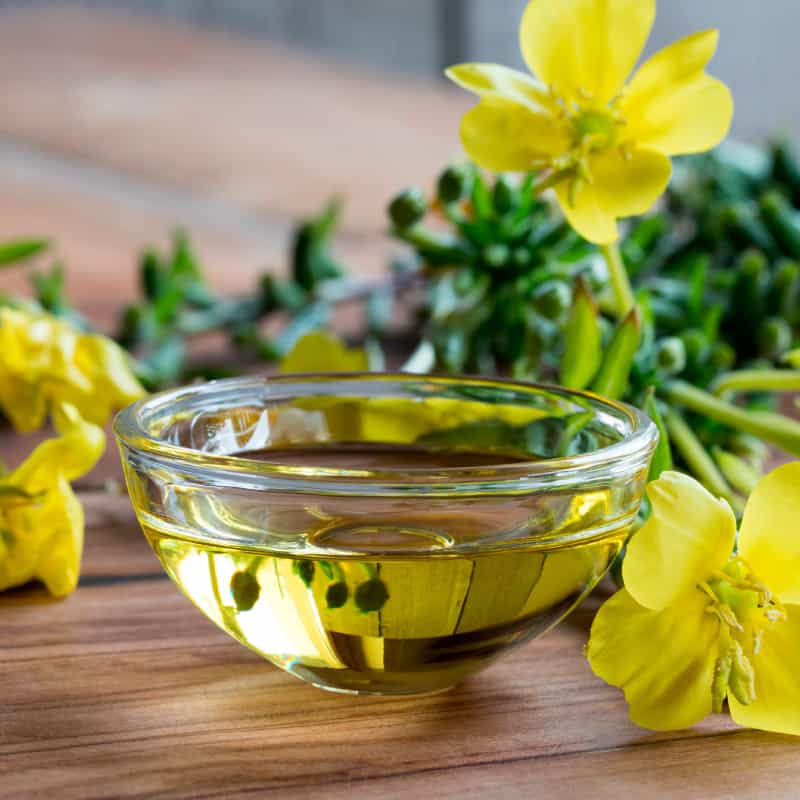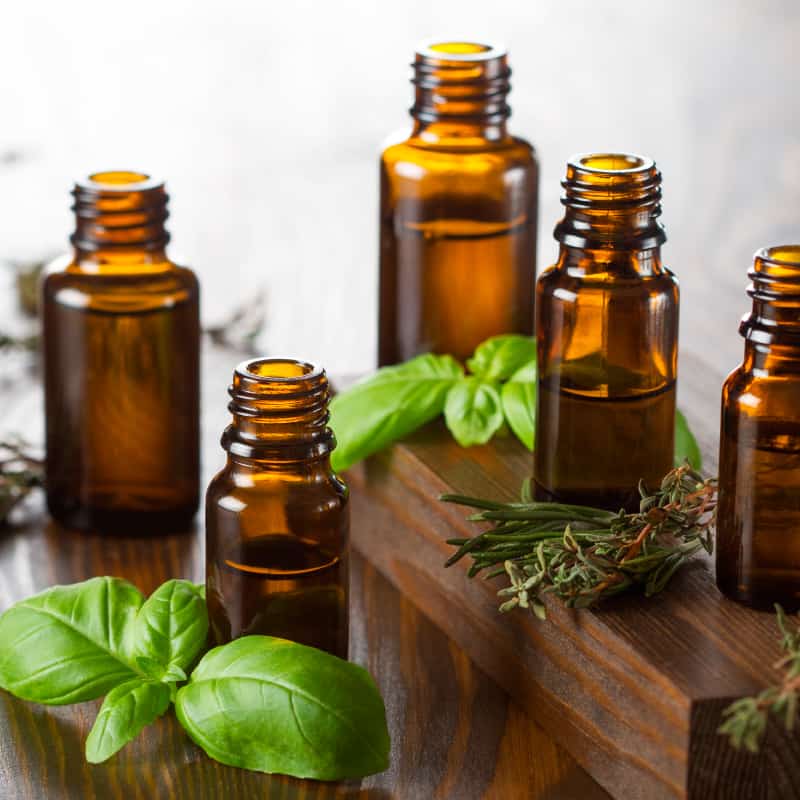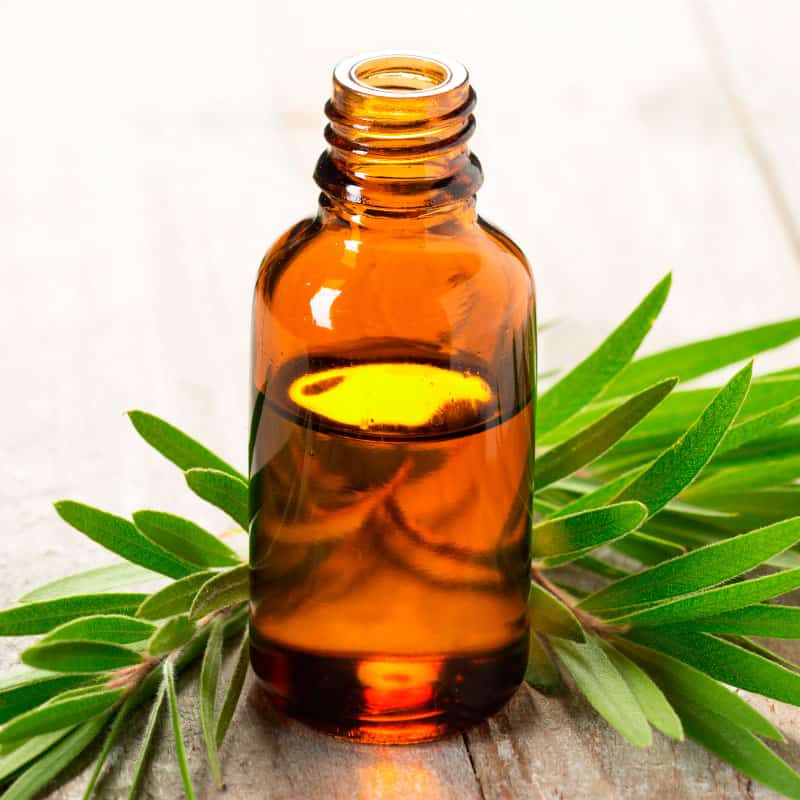This Dr. Axe content is medically reviewed or fact checked to ensure factually accurate information.
With strict editorial sourcing guidelines, we only link to academic research institutions, reputable media sites and, when research is available, medically peer-reviewed studies. Note that the numbers in parentheses (1, 2, etc.) are clickable links to these studies.
The information in our articles is NOT intended to replace a one-on-one relationship with a qualified health care professional and is not intended as medical advice.
This article is based on scientific evidence, written by experts and fact checked by our trained editorial staff. Note that the numbers in parentheses (1, 2, etc.) are clickable links to medically peer-reviewed studies.
Our team includes licensed nutritionists and dietitians, certified health education specialists, as well as certified strength and conditioning specialists, personal trainers and corrective exercise specialists. Our team aims to be not only thorough with its research, but also objective and unbiased.
The information in our articles is NOT intended to replace a one-on-one relationship with a qualified health care professional and is not intended as medical advice.
Top 15 Peppermint Oil Uses and Benefits for Gut Health, Headaches & More
December 8, 2023

Peppermint oil is one of the most versatile essential oils out there. It can be used aromatically, topically and internally to address a number of health concerns, from muscles aches and seasonal allergy symptoms to low energy and digestive complaints.
It’s also commonly used to boost energy levels and improve both skin and hair health.
A review conducted by the U.S. Department of Agriculture Human Nutrition Research Center on Aging at Tufts University found that peppermint has significant antimicrobial and antiviral activities. It also:
- works as a strong antioxidant
- displays anti-tumor actions in lab studies
- shows anti-allergenic potential
- has pain-killing effects
- helps relax the gastrointestinal tract
- may be chemopreventive
It’s no wonder why peppermint oil is one of the most popular essential oils in the world and why I recommend that everyone has it in his or her medicine cabinet at home.
What Is Peppermint Oil?
Peppermint is a hybrid species of spearmint and water mint (Mentha aquatica). The essential oils are gathered by CO2 or cold extraction of the fresh aerial parts of the flowering plant.
The most active ingredients include menthol (50 percent to 60 percent) and menthone (10 percent to 30 percent).
You can find peppermint in several forms, including peppermint essential oil, peppermint leaves, peppermint spray and peppermint tablets. The active ingredients in peppermint give the leaves their invigorating and energizing effects.
Menthol oil is commonly used in balms, shampoos and other body products for its beneficial properties.
Not only is peppermint oil one of the oldest European herbs used for medicinal purposes, but other historical accounts date its use to ancient Japanese and Chinese folk medicine. It’s also mentioned in Greek mythology when the nymph Mentha (or Minthe) was transformed into a sweet-smelling herb by Pluto, who had fallen in love with her and wanted people to appreciate her for years to come.
The many peppermint oil uses have been documented back to 1000 B.C. and have been found in several Egyptian pyramids.
Today, peppermint oil is recommended for its anti-nausea impacts and soothing effects on the gastric lining and colon. It’s also valued for its cooling effects and helps relieve sore muscles when used topically.
In addition to this, peppermint essential oil displays antimicrobial properties, which is why it can be used to fight infections and even freshen your breath. Pretty impressive, right?
Top 15 Uses and Benefits
Some of the many uses and benefits of peppermint oil include:
1. Relieves Muscle and Joint Pain
If you are wondering if peppermint oil is good for pain, the answer is a resounding “yes!” Peppermint essential oil is a very effective natural painkiller and muscle relaxant.
It also has cooling, invigorating and antispasmodic properties. Peppermint oil is especially helpful in alleviating a tension headache. One clinical trial indicates that it performs as well as acetaminophen.
Another study shows that peppermint oil applied topically has pain relief advantages associated with fibromyalgia and myofascial pain syndrome. Researchers found that peppermint oil, eucalyptus, capsaicin and other herbal preparations may be helpful because they work as topical analgesics.
To use peppermint oil for pain relief, simply apply two to three drops topically to the area of concern three times daily, add five drops to a warm bath with Epsom salt or try a homemade muscle rub. Combining peppermint with lavender oil is also a great way to help your body relax and reduce muscle pain.
2. Sinus Care and Respiratory Aid
Peppermint aromatherapy can help unclog your sinuses and offer relief from a scratchy throat. It acts as a refreshing expectorant, helping open your airways, clear mucus and reduce congestion.
It also is one of the best essential oils for colds, the flu, cough, sinusitis, asthma, bronchitis and other respiratory conditions.
Lab studies show that the compounds found in peppermint oil have antimicrobial, antiviral and antioxidant properties, meaning it may also help fight infections that lead to symptoms involving the respiratory tract.
Mix peppermint oil it with coconut oil and eucalyptus oil to make my homemade vapor rub. You can also diffuse five drops of peppermint or apply two to three drops topically to your temples, chest and back of neck.
3. Seasonal Allergy Relief
Peppermint oil is highly effective at relaxing muscles in your nasal passages and helping clear out the muck and pollen from your respiratory tract during allergy season. It’s considered one of the best essential oils for allergies because of its expectorant, anti-inflammatory and invigorating properties.
A lab study published in the European Journal of Medical Research found that peppermint compounds displayed potential therapeutic efficacy for the treatment of chronic inflammatory disorders, such as allergic rhinitis, colitis and bronchial asthma.
Meanwhile, a 2022 study published in Frontiers in Allergy found that peppermint essential oil inhalation “effectively restores tight junctions and suppresses inflammation in the allergic rhinitis model.”
To help relieve seasonal allergies symptoms with your own DIY product, diffuse peppermint and eucalyptus oil at home, or apply two to three drops of peppermint topically to your temples, chest and back of neck.
4. Increases Energy and Improves Exercise Performance
For a non-toxic alternative to unhealthy energy drinks, take a few whiffs of peppermint. It helps boost your energy levels on long road trips, in school or any other time you need to “burn the midnight oil.”
Research suggests that it may also help improve memory and alertness when inhaled. It can be used to enhance your physical performance, whether you need a little push during your weekly workouts or you are training for an athletic event.
A study published in the Avicenna Journal of Phytomedicine investigated the effects of peppermint ingestion on exercise performance. Thirty healthy male college students were randomly divided into experimental and control groups. They were given a single oral dose of peppermint essential oil, and measurements were taken on their physiological parameters and performance.
Researchers observed significant improvements in all of the tested variables after ingestion of peppermint oil. Those in the experimental group showed an incremental and significant increase in their grip force, standing vertical jump and standing long jump.
The peppermint oil group also showed a significant increase in the amount of air that is exhaled from the lungs, peak breathing flow rate and peak exhaling flow rate. This suggests that peppermint may have a positive effect on the bronchial smooth muscles.
To boost your energy levels and improve concentration with peppermint oil, take one to two drops internally with a glass of water, or apply two to three drops topically to your temples and back of neck.

5. Alleviates Headaches
Peppermint for headaches has the ability to improve circulation, soothe the gut and relax tense muscles. All of these conditions can cause tension headaches or migraines, making peppermint oil one of the best essential oils for headaches.
A clinical trial from researchers at the Neurological Clinic at the University of Kiel, Germany, found that a combination of peppermint oil, eucalyptus oil and ethanol had a “significant analgesic effect with a reduction in sensitivity to headaches.” When these oils were applied to the forehead and temples, they also increased cognitive performance and had a muscle-relaxing and mentally relaxing effect.
To use it as a natural headache remedy, simply apply two to three drops to your temples, forehead and back of neck. It will begin to ease pain and tension upon contact.
6. Improves IBS Symptoms
Peppermint oil capsules have been shown to be effective at naturally treating irritable bowel syndrome (IBS). Peppermint oil for IBS reduces spasms in the colon, relaxes the muscles of your intestines, and can help reduce bloating and gassiness.
A placebo-controlled, randomized clinical trial found a 50 percent reduction in IBS symptoms with 75 percent of patients who used it. When 57 patients with IBS were treated with two peppermint oil capsules twice a day for four weeks or placebo, a majority of the patients in the peppermint group experienced improved symptoms, including reduced abdominal bleeding, abdominal pain or discomfort, diarrhea, constipation, and urgency at defecation.
To help relieve IBS symptoms, try taking one to two drops of peppermint oil internally with a glass of water or adding it to a capsule before meals. You can also apply two to three drops topically to your abdomen.
7. Freshens Breath and Supports Oral Health
Tried and true for well over 1,000 years, the peppermint plant has been used to naturally freshen breath. This is probably due to the way peppermint oil kills bacteria and fungus that can lead to cavities or infection.
A lab study published in the European Journal of Dentistry found that peppermint oil (along with tea tree oil and thyme essential oil) displayed antimicrobial activities against oral pathogens, including Staphylococcus aureus, Enterococcus faecalis, Escherichia coli and Candida albicans.
To boost your oral health and freshen your breath, try making my homemade baking soda toothpaste or homemade mouthwash. You can also add a drop of peppermint oil right to your store-bought toothpaste product or add a drop under your tongue before drinking liquids.
8. Promotes Hair Growth and Reduces Dandruff
Peppermint is used in many high-quality hair care products because it can naturally thicken and nourish damaged strands. It can be used as a natural treatment for thinning hair, and it helps stimulate the scalp and energize your mind.
Plus, menthol has proven to be a powerful antiseptic agent, so it may help remove germs that build up on your scalp and strands. It’s even used in anti-dandruff shampoos.
It may actually be one of the best oils for hair growth.
An animal study that tested its efficacy for regrowth on mice showed that after topical application of peppermint for four weeks, there was a significant increase in dermal thickness, follicle number and follicle depth. It was more effective than topical application of saline, jojoba oil and minoxidil, a medication that’s used for regrowth.
To use peppermint for your locks to promote growth and nourishment, simply add two to three drops to your shampoo and conditioner. You can also make my homemade rosemary mint shampoo, make a spray product by adding five to 10 drops of peppermint to a spray bottle filled with water or simply massage two to three drops into your scalp while showering.
9. Relieves Itchiness
Research shows that the menthol found in peppermint oil inhibits itching. A triple-blind clinical trial involving 96 randomly selected pregnant women diagnosed with pruritus tested peppermint’s ability to improve symptoms. Pruritus is a common problem that’s associated with a frustrating, ongoing itchiness that cannot be soothed.
For the study, women applied a combination of peppermint and sesame oil or placebo twice a day for two weeks. Researchers found that the severity of the itch in the treated group showed a significant statistical difference compared to the placebo group.
Living with itchiness can be a pain. To help relieve itching with peppermint, simply apply two to three drops topically to the area of concern, or add five to 10 drops to a warm water bath.
If you have sensitive skin, combine it with equal parts carrier oil before topical application. You can also mix it into a lotion or cream in place of the carrier oil.
10. Repels Bugs Naturally
Unlike us humans, a number of little critters hate the smell of peppermint, including ants, spiders, cockroaches, mosquitos, mice and possibly even lice. This makes peppermint oil for spiders, ants, mice and other pests an effective and natural repelling agent. It may also be effective for ticks.
A review of plant-based insect repellents published in Malaria Journal found that the most effective plant essential oils used in bug repellents include:
- peppermint
- lemongrass
- geraniol
- pine
- cedar
- thyme
- patchouli
- clove
These oils have been found to repel malaria, filarial and yellow fever vectors for 60–180 minutes.
Another study showed that peppermint oil resulted in 150 minutes of complete protection time against mosquitos, with just 0.1 mL of oil applied on the arms. The researchers noted that after 150 minutes, the efficacy of peppermint oil decreased and needed to be reapplied.
11. Reduces Nausea
When 34 patients experienced post-operative nausea after undergoing cardiac surgery and they used a nasal aromatherapy inhaler that contained peppermint oil, their nausea levels were found to be significantly different than before inhaling peppermint.
The patients were asked to rate their feelings of nausea on a scale of 0 to 5, with 5 being the greatest nausea. The average score went from 3.29 before peppermint oil inhalation to 1.44 two minutes after it.
To get rid of nausea, simply inhale peppermint oil directly from the bottle, add one drop to a glass of distilled water or rub one to two drops behind your ears.
12. Improves Colic Symptoms
There is research that suggests peppermint oil can be useful as a natural colic remedy. According to a crossover study published in Evidence-Based Complementary and Alternative Medicine, using peppermint oil is equally effective as the drug Simethicone for treating infantile colic, without the side effects associated with prescribed medications.
Researchers found that the mean crying time among infants with colic went from 192 minutes per day to 111 minutes per day. All mothers reported an equal decrease of frequency and duration of colic episodes among those using peppermint oil and Simethicone, a medication that’s used to relieve gassiness, bloating and stomach discomfort.
For the study, infants were given one drop of Mentha piperita per kilogram of body weight once a day for a seven-day period. Before using it on your infant, be sure to discuss this treatment plan with your child’s pediatrician.
13. Boosts Skin Health
Peppermint oil has calming, softening, toning and anti-inflammatory effects on the skin when it’s used topically. It has antiseptic and antimicrobial properties.
A review of essential oils as potential antimicrobials to treat skin diseases published in Evidence-Based Complementary and Alternative Medicine found that peppermint oil is effective when used to reduce:
- blackheads
- chicken pox
- greasy skin
- dermatitis
- inflammation
- itchy skin
- ringworm
- scabies
- sunburn
To improve the health of your skin and use as a home remedy for acne, mix two to three drops with equal parts lavender essential oil, and apply the combination topically to the area of concern.
14. Sunburn Protection and Relief
Peppermint oil can hydrate areas affected by sunburn and relieve the pain. It can also be used to help prevent sunburn.
An in vitro study found that peppermint oil has a sun protection factor (SPF) value that’s higher than most other essential oils, including lavender, eucalyptus, tea tree and rose oils.
To boost healing after sun exposure and help protect yourself from sunburn, mix two to three drops of peppermint oil with a half-teaspoon of coconut oil, and apply it directly to area of concern. You can also make my natural homemade sunburn spray to relieve pain and support healthy skin renewal.
15. Potential Anti-Cancer Agent
Although more research is needed in this area, some lab studies indicate that peppermint may be useful as an anticancer agent. One such study found that the compound menthol inhibits prostate cancer growth by inducing cell death and regulating cellular processes.
How to Use It Safely
Peppermint oil is incredibly versatile. It’s safe for both internal and external use in appropriate amounts and can be used with or without a carrier oil to dilute it (when used topically).
Here are some safe and effective ways to use it in your day-to-day routine:
Diffuse it
Want to feel awake and alert? Try adding about five drops to a diffuser for an energizing scent that easily fills a room.
This form of aromatherapy can even help you breathe easier. Just follow essential oil safety guidelines, and breathe it in as the scent diffuses through the room — with aromatherapy, there’s no need to hold your head over the air coming from the diffuser.
Cook with it
Using edible essential oils, like peppermint, in cooking food is an incredible, natural way to get not only peppermint oil perks, but also a great minty punch to dishes. Peppermint bark, anyone?
Add it to smoothies or drinks
Many people wonder: Can you drink peppermint oil? Whether it’s a drop in your drink or two drops in a smoothie, pure peppermint can really give a refreshing kick to a beverage. Plus, it’s a great choice for fighting off bacteria and stomach issues.
Create a massage oil with it
Can you apply peppermint oil directly to skin? Yes!
Since peppermint oil soothes, cools and invigorates, it’s the perfect ingredient for massage oil, especially in the summer. Dilute several drops in almond or grapeseed oil. For bonus relaxation, add lavender and eucalyptus.
Scrub your feet with it
Tired of cosmetics and personal care products full of unknown, unsavory chemicals? I recommend making your own homemade product whenever you can.
Peppermint oil makes a great addition to an exfoliating foot scrub to give your feet a treat.
Grow it at home
Growing peppermint is a great way to reap the plant’s perks at home.
The peppermint plant needs a good amount of sun and plenty of water. It won’t tolerate dry conditions.
To make peppermint tea with your homegrown leaves, simply add five to 10 leaves to a mug, and muddle them. Then pour hot water over the leaves, and let it steep for about 10 minutes.
The possibilities are virtually endless. People use it in DIY shampoos, soaps, hairsprays, lip balms and more.
Risks, Side Effects and Interactions
Although it’s such a beneficial and effective remedy, there are some peppermint essential oil warnings to keep in mind. Can it hurt you? It’s considered safe when used appropriately.
When you are using it on sensitive areas, always dilute it with a carrier oil (like coconut oil) first. If you’re new to using it, it’s a good idea to try a patch test on a small area before applying peppermint oil to larger surfaces.
I don’t recommend using it on the face or chest of infants or young children because it can cause irritations. There also isn’t enough evidence to recommend peppermint oil use for women who are pregnant or nursing.
Is it safe for dogs? Because peppermint oil for fleas is so effective, it’s commonly used in dog flea repellents.
For dogs, it can also be used to cool sore muscles and soothe upset stomachs. It’s recommended using it topically for dogs by adding it to dog-friendly shampoos or cleansing products.
As for a related question you may be wondering: Is it safe for cats? I don’t recommend using it for cats because it may cause adverse side effects.
Instead, using spearmint oil on cats may help relieve nausea, diarrhea and other digestive issues. When comparing the two, peppermint’s flavor and fragrance are much stronger because it’s higher in menthol.
Is it toxic to humans? It’s likely safe when taken by mouth in amounts commonly found in food and when used topically and aromatically.
Is peppermint oil good to drink? The answer is generally yes, but only in small amounts.
That said, taking excessive amounts of the oil orally can be toxic, so remember that a little bit goes a long way. All you need is one to two drops at a time.
For some people, ingesting it may cause side effects, which may include heartburn, flushing, mouth sores and headache.
Some prescription medications and over-the-counter medications may adversely interact with peppermint oil. Enteric-coated supplements may cause rapid dissolving, leading to heartburn, nausea and rapid absorption of some medications.
The following medications carry a “moderate” potential for interaction with peppermint oil:
- Neoral
- Sandimmune
- Elavil
- Haldol
- Zofran
- Inderal
- Theo-Dur
- Calan
- Isoptin
- Prilosec
- Prevacid
- Protonix
- Diazepam
- Valium
- Soma
- Viracept
- Cataflam
- Voltaren
- Ibuprofen/Motrin
- Mobic
- Feldene
- Celebrex
- Elavil
- Warfarin/Coumadin
- Glucotrol
- Iosartan
- Cozaar
- Mevacor
- Nizoral
- Sporanox
- Allegra
- Halcion
The following medications carry a “minor” potential for interaction:
- Over-the-counter and prescription antacids
- Tums
- Rolaids
- Ripan
- Bilagog
- Amphojel
- Tagamet
- Zantac
- Axid
- Pepcid
- Prilosec
- Prevacid
- Aciphex
- Protonix
- Nexium
Peppermint can reduce the absorption of iron when taken simultaneously. If you’re taking iron supplements and peppermint oil, allow at least three hours between the two.
Peppermint also increases the absorption of quercetin when taken at the same time, so allow at least three hours between taking these together as well.
Conclusion
- Peppermint oil is known for its cooling, invigorating, expectorant, antimicrobial, antispasmodic, energy-boosting and pain-relieving properties.
- It is one of the oldest European herbs used for medicinal purposes, with its top uses including pain relief, respiratory aid, allergy relief and increased energy.
- What are the potential side effects? For people with a sensitivity to peppermint oil, it may cause headache, heartburn and irritation. It should not be used on the skin of infants or young children.




